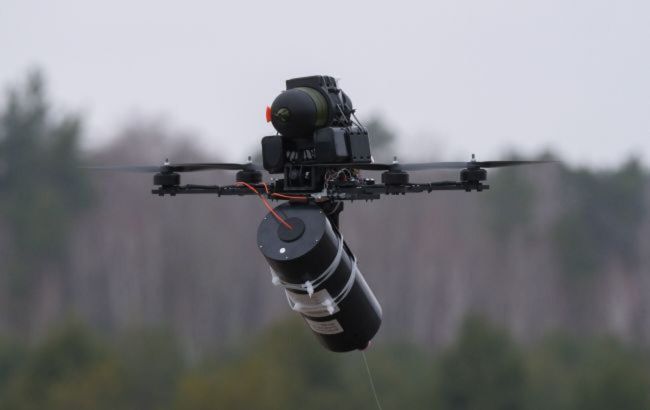AI gives Ukrainian FPV drones battlefield boost - What to know about TFL-1
 Photo: FPV drone (Vitalii Nosach / RBC-Ukraine)
Photo: FPV drone (Vitalii Nosach / RBC-Ukraine)
Ukrainian units have begun deploying a new terminal guidance system known as TFL-1. The technology significantly improves the accuracy of FPV drones and enables them to strike targets even if the communication link is disrupted, according to a publication by Le Monde.
Ukrainian forces have integrated the TFL-1 system, which provides autonomous terminal guidance for FPV drones during the final 400–500 meters of flight.
The technology enables Ukrainian drones to strike personnel and equipment even when operators lose control due to terrain or Russian electronic warfare.
The system was developed by the Ukrainian company The Fourth Law. After an initial demonstration, one frontline unit ordered the first batch despite early skepticism.
"When we tested the module, we immediately saw it could track a moving target from 400 meters," a soldier involved in the trials said.
According to test data, all of the first 10 launches hit their designated targets, including those concealed in "radio shadow" zones. The success prompted a new order for 30 additional modules.
How system performs in combat
The 412th Autonomous Brigade Nemesis, operating between Zaporizhzhia and Pokrovske, also purchased 100 modules and has reported the first combat results.
A drone pilot with the callsign Jazz said roughly half of the first 20 strikes were successful.
Engineer Tony noted that many developers are pursuing AI-guided targeting, but achieving reliable performance is "extremely difficult," especially for confident recognition of dismounted troops without advanced optics.
Cost, capabilities and adoption
The Ministry of Defence of Ukraine has certified the TFL-1 system, which is already in use with around 20 brigades. The module costs between $50 and $100, less than 10% of a typical FPV drone.
TFL-1 supports three modes:
-
Green - manual tracking
-
Red - AI targeting
-
Blue - enhanced neural-network mode for armored targets
The module is locked to Ukrainian systems and cannot be used on Russian drones, even if captured.
Russia's response
Ukrainian experts report that Russian forces are fielding drones with partial autonomous navigation, including the V2U model with a reported 100 km range, believed to be entering mass production.
The Fourth Law expects expanded government procurement to further reduce reliance on operators, overcome electronic warfare, and increase drone autonomy on the battlefield.
Their stated goal: fully autonomous Ukrainian strike drones equipped with scalable AI-guidance systems.
Ukraine is rapidly increasing domestic drone production to phase out dependence on DJI Mavic aircraft. Thousands of locally made drones are already operating on the front lines.

